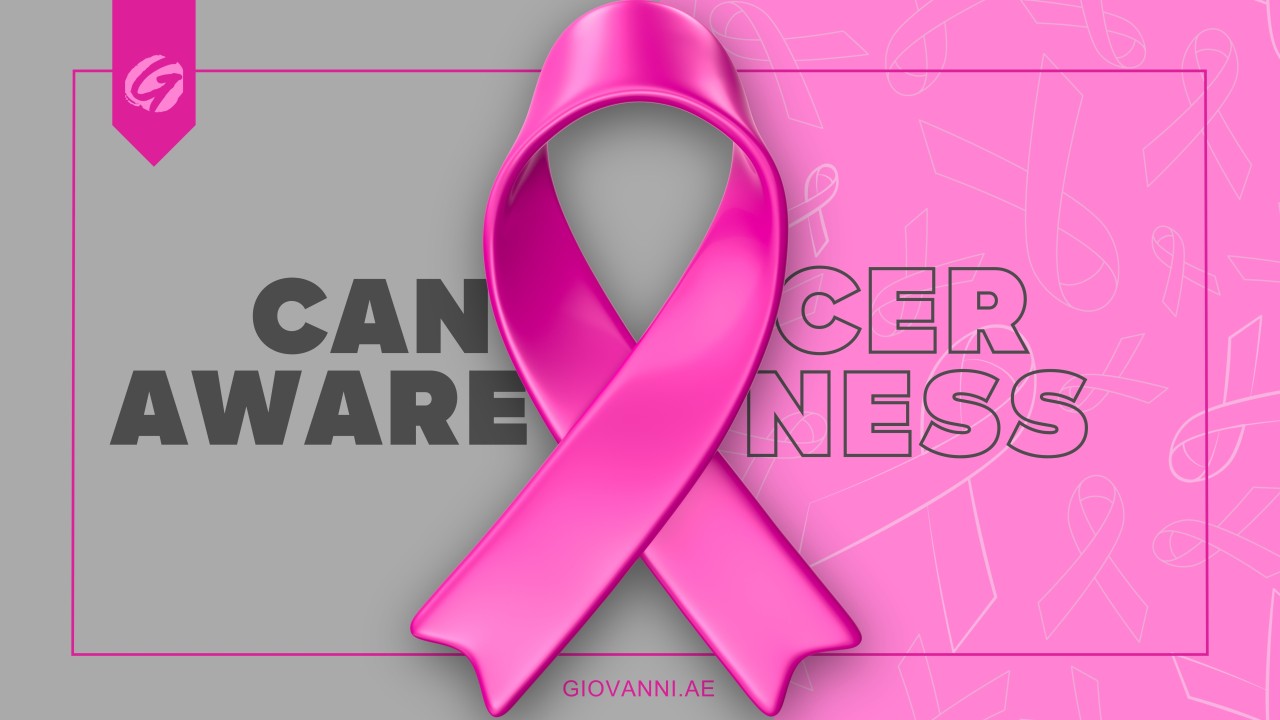October is Breast Cancer Awareness Month: A Time to Reflect, Support, and Take Action
Every October, Breast Cancer Awareness Month brings global attention to a disease that affects millions of people, women, men, and their families. But it’s about more than just pink ribbons. For some, it’s a time of support and empowerment, while for others, the month may serve as a difficult reminder of a life-changing diagnosis. Whether you’re here to learn, support, or raise awareness, this month is an opportunity to make a real difference.
What Is Breast Cancer Awareness Month?
Breast Cancer Awareness Month is an international campaign dedicated to raising awareness about breast cancer, promoting regular screenings, and educating the public on prevention and treatment options. Over 2.3 million women worldwide are diagnosed with breast cancer every year. The campaign encourages regular breast cancer screening starting at age 40 (or earlier for those at higher risk) and advocates for improved research funding.
The pink ribbon, now globally recognized, is a symbol of this movement. But while it brings hope to many, some feel it overlooks the complexity and personal struggles associated with living with breast cancer. Breast Cancer Awareness Month encourages deeper understanding and action beyond the color pink.
Key Awareness Days During October
This month isn’t just about awareness—it’s about shedding light on specific groups within the breast cancer community. These designated days offer a chance to focus on the unique challenges faced by various segments of the population:
- Metastatic Breast Cancer Awareness Day – October 13
Metastatic breast cancer is when cancer spreads beyond the breast to other parts of the body, like the bones, lungs, or liver. Approximately 168,000 women in the U.S. are currently living with metastatic breast cancer, which accounts for around 30% of early-stage breast cancers that eventually metastasize. October 13 is Metastatic Breast Cancer Awareness Day, designed to bring attention to the need for more research and better treatments for this advanced stage of the disease.
- Men’s Breast Cancer Awareness Week – October 17-23
While breast cancer is much more common in women, it also affects men. Men’s Breast Cancer Awareness Week (October 17-23) serves as a reminder that about 2,790 men will be diagnosed with breast cancer in 2024, and roughly 530 are expected to die from it. Lack of awareness and the stigma surrounding male breast cancer often prevent early diagnosis, making this week essential for education. Trans men and non-binary individuals are also impacted, and increased attention is needed to ensure they receive appropriate care and support.
The History of Breast Cancer Awareness Month
Breast Cancer Awareness Month began in 1985 as a week-long campaign created by the American Cancer Society and Imperial Chemical Industries, which developed the breast cancer drug tamoxifen. By 1992, the iconic pink ribbon became the official symbol of breast cancer awareness, popularized by SELF magazine’s Alexandra Penney and Estée Lauder’s Evelyn Lauder. Over the decades, the campaign has grown to a month-long international movement, but not without some criticism.

The Pink Ribbon: Symbol or “Pinkwashing”?
The pink ribbon, now a widely recognized symbol of breast cancer awareness, has had a significant impact on fundraising and education efforts. However, the commercialization of the pink ribbon—often called “pinkwashing”—has raised concerns. This refers to companies using the pink ribbon to promote products without truly supporting the cause or even selling products with harmful chemicals potentially linked to cancer. Breast Cancer Awareness Month reminds us that genuine awareness should lead to meaningful action.

Reducing Your Risk of Breast Cancer: Lifestyle Changes
While breast cancer is not entirely preventable, there are steps everyone can take to reduce their risk:
1. Stay Active: Regular physical activity, such as 30 minutes of exercise a day, can help reduce your risk of breast cancer.
2. Maintain a Healthy Weight: Obesity is linked to a higher risk of breast cancer and can also affect outcomes for those diagnosed.
3. Follow a Nutritious Diet: A balanced diet, rich in whole grains, fruits, vegetables, and plant-based proteins, can help reduce your risk.
4. Limit Alcohol: Excessive alcohol consumption increases the risk of breast cancer. It’s recommended to limit alcohol to no more than one drink a day.
5. Quit Smoking: Smoking is linked to a higher risk of many cancers, including breast cancer.
6. Breastfeed if Possible: Breastfeeding has been shown to reduce the risk of breast cancer.
7. Caution with Birth Control and HRT: Birth control pills and hormone replacement therapy (HRT) can slightly increase breast cancer risk. It’s important to consult with your doctor about the best options for you.
8. Know Your Family History: A family history of breast or ovarian cancer increases your risk. Discuss your family history with your doctor to determine if genetic testing or increased screening is right for you.
9. Know Your Personal Risk: Factors such as dense breast tissue, previous breast cancer diagnoses, and genetic mutations (like BRCA1 or BRCA2) can elevate your risk. If you’re at higher risk, explore risk-reduction options with your doctor.
10. Get Screened Regularly: Mammograms are critical for early detection. Women over 40 are encouraged to receive annual screenings, and those with higher risk may need earlier or more frequent screenings.
Frequently Asked Questions About Breast Cancer Prevention
Who is most at risk for breast cancer?
There are several known risk factors for breast cancer. Having multiple risk factors increases your risk of breast cancer. Risk factors include:
– Being over 50
– Inherited changes to the BRCA1 and BRCA2 genes
– Starting menstruation before age 12
– Starting menopause after age 55
– Previous breast cancer diagnosis
– Dense breast tissue
– Family history of breast or ovarian cancer
– Previous radiation therapy treatment
– Exposure to diethylstilbestrol (DES) in the womb
What medications help prevent breast cancer?
There are currently two medications approved by the FDA to help prevent breast cancer in women who have a 1.67% chance or greater of developing breast cancer within the next 5 years:
– Tamoxifen (Soltamox)
– Raloxifene hydrochloride (Evista)
These medications work by reducing the activity of estrogen in the body. You and your doctor can discuss if these medications are an appropriate option for you.

#PINKtober is Al Jalila Foundation’s breast cancer fundraising campaign. Every year in October, hundreds of organizations and members of the community join hands with Al Jalila Foundation to organize events and activities across the UAE to raise funds for our breast cancer program.

The Ministry of Health and Prevention (MoHAP) has launched its annual national Awareness Campaign for the Early Detection of Breast Cancer under the slogan “Powered by You,” aimed at raising awareness about the importance of early detection and prevention. The campaign, in partnership with the Friends of Cancer Patients (Pink Caravan), MSD Middle East, Emirates Development Bank, and other corporate sponsors, provides free mammograms for women aged 40 and above, along with self-examination guidance and preventive tips.
The initiative, part of the global “Pink October” Breast Cancer Awareness Month, includes mobile screening services and awareness activities across the UAE, such as at City Centre Mirdif, Al Majaz Park, and the Emirates Airline Headquarters. The campaign also promotes collaboration between government and non-governmental health bodies to improve early diagnosis and treatment.
Senior officials, including Dr. Hussain Abdul Rahman Al Rand, highlighted the UAE’s commitment to early breast cancer detection, calling it a “national humanitarian duty.” Dr. Buthaina Bin Belaila emphasized that early detection raises the recovery rate to over 95% and urged women to undergo regular screenings while adopting healthy lifestyle practices.

Takeaway
There’s no way to completely predict or prevent breast cancer. However, there are steps you can take to reduce your risk. This includes making changes to your lifestyle, such as increasing physical activity, losing weight, quitting smoking, and eating a healthy diet.
Preventive measures, such as annual screenings and learning your family history, can also help you manage your risk. If you have a high risk of breast cancer, you and your doctor can discuss risk reduction options. For some people, treatments such as medications or preventive surgery are good options. Your doctor can help you decide what’s best for you.
Early Detection Saves Lives
One of the key messages of Breast Cancer Awareness Month is the importance of early detection. Mammograms can detect abnormalities before symptoms appear, offering the best chance for successful treatment. Knowing the symptoms of breast cancer—such as changes in breast size, lumps, or nipple discharge—and reporting them early can make a life-saving difference.
What Breast Cancer Awareness Month Means Today
After 38 years of advocacy, education, and research, Breast Cancer Awareness Month continues to evolve. The awareness raised during this month has had a profound impact, with more women understanding the importance of screenings and millions of dollars raised for research. However, the fight isn’t over. We must continue to push for better treatments, support systems, and preventative care, and ensure that everyone—regardless of gender—gets the care and attention they need.
This October let’s come together not just to raise awareness, but to take action. Encourage those around you to get screened, support breast cancer research, and listen to the stories of those impacted by this disease. Together, we can make a real difference in the fight against breast cancer. Stay Connected with Giovanni!
Follow us on LinkedIn: https://www.linkedin.com/company/giovanni-dubai/
Subscribe to our Newsletter: https://rb.gy/vims73
Thank you for being part of the Giovanni community.
Warm regards,




